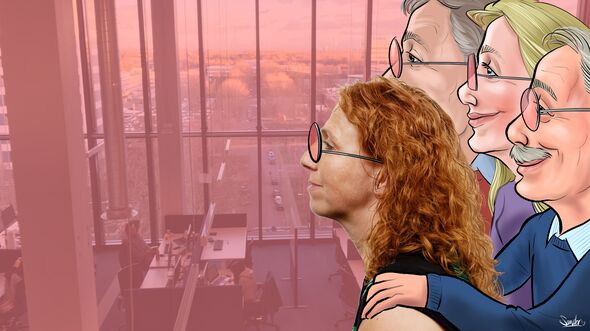Brainmatters | Clean slate
Why do we subconsciously take the car again instead of the bike? What is it that makes us light up that cigarette, or allows us to let our papers pile up in front of our keyboards, despite our good intentions? Man is a creature of habit, but breaking through habits can best be done in a new context. So, plenty of opportunities in Atlas…
A new year, new opportunities - al least, that’s what all new year’s resolutions imply. We close the books of the old year and think we can start the new year with a clean slate. But unfortunately, it turns out that bad habits are generally just as difficult to break in January as in the month before, despite all the best intentions. And that can easily be explained: we human beings are creatures of habit.
For instance, research by Quin and Woods in 2004 has shown that almost fifty percent of the activities that people carry out during the day are repeated daily, and often at the same location. When we perform actions with regularity, cognitive and neurological changes occur in the brain. Strong associations are formed between the different steps of our behavior and the situation in which it occurs which then sustain the carrying out of that same behavior, especially in the same context. That’s convenient: we can absentmindedly make a cup of tea in the morning and spread our bread while we help our children look for their missing shoe in the meantime, or ride our bikes to campus while we fret over the tasks that await us there.
Intentions
But it also leads us to subconsciously take the car again, even though we were supposed to take the bike, or to light up that next cigarette, or - in my case - to pile up those papers in front of our keyboard. The problem is that these habits are etched in our memory, separated from the intentions we try to plant in there as well.
But there is hope for all those students, teachers and staff who are moving to Atlas. As it turns out, is has been shown that when people are taken out of their behavioral context, many of these habits no longer set in automatically.
Instead, we have to consciously think about our behavior, and that gives our intentions - or: good resolutions - a chance of success. Like me, many of you have spent the last couple of workdays tidying up and, mostly, throwing things out. After all, we are moving to a clean desk environment without any cabinets or bookshelves, or even without any desk drawers. And now we start - literally and figuratively - with a clean slate. A new space, new furniture. Gone are all the old things and those papers we surrounded ourselves with for years, sometimes even decades. Gone is my dust-covered laptop, gone is my view of the rain-soaked parking area, and gone is that co-worker sitting opposite of my desk who would sometimes sigh so deeply.
Social habits
Nothing is familiar and nothing happens automatically, and so we have to start thinking afresh: where do I keep my books? Where do I leave my print-out? Where am I going to sit and do a little reading? Am I going to have lunch? If so, when and with whom, because this new context is also going to reshape my social habits and contacts.
Our new office actually creates that clean slate we sometimes long for, even though my room is cluttered with boxes (despite all the cleaning out) and hardly resembles the clean officeof the interior designer’s dreams.
During my first day in Atlas I enjoyed the beautiful view in the early morning. Looking through rose-colored glasses, I saw the sky take on the colors of tangerine and raspberry and thought to myself: let me at least try to embrace this moment and try to work more effectively starting now: I am going to take breaks, I am going to drop in on a colleague now and then, I am going to have lunch. And for all of you who also need a change of scenery in order to stop the bad habits and realize your resolutions: Atlas is a flex office, so join in and we will make it a great year together.
Yvonne de Kort | Professor of Environmental Psychology at Human-Technology Interaction
![[Translate to English:]](/fileadmin/_processed_/e/c/csm_tussen_de_oren_roze_bril_yvonne_6487dbfaa4.jpg)


Discussion